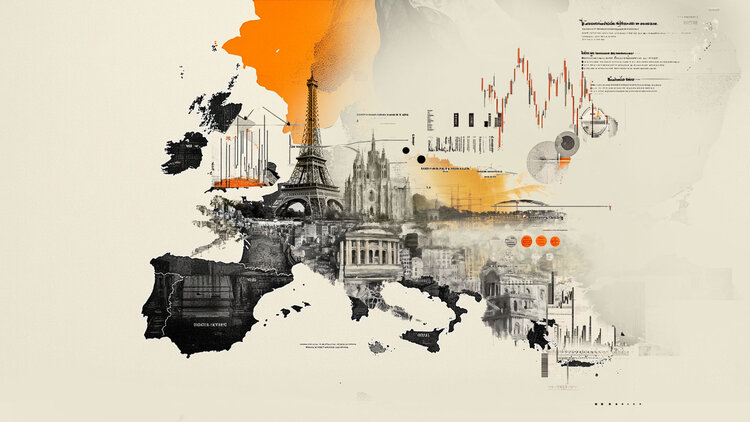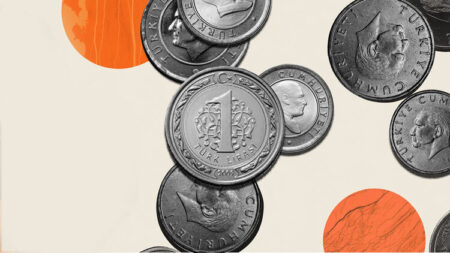The Euro (EUR) is holding steady against the US Dollar (USD) on Tuesday, with the EUR/USD pair hovering around 1.1725 at the time of writing, with no clear trend for the day. Traders are awaiting the publication of the September Harmonized Index of Consumer Prices (HICP) for the Eurozone at 09:00 GMT on Wednesday.
The data could shed light on the next steps to be taken by the European Central Bank (ECB). Against this backdrop, traders are adjusting their positions, aware that the slightest surprise, whether bullish or bearish, could alter monetary policy expectations and influence the Euro’s valuation.
Inflation is at the core of the debate
Annual inflation is forecasted to rise to 2.2% from 2.0% in August, while core inflation is expected to remain stable at 2.3%.
The latest August figures confirmed a slowdown in headline inflation to 2.0%, with in particular a 2.0% fall in energy prices. Nevertheless, core inflation, excluding energy and food, had stabilized at 2.3%, its lowest level since January 2022. This reflects persistent pressure on service prices, up 3.1%, and on certain food categories.
In September, the national data point to a pickup in inflation in several major economies. Germany saw prices accelerate to a year-high 2.4%, higher than what economists had expected, with a notable contribution from services of 3.4%.
Spain recorded a rate of 2.9%, driven by energy, while France climbed to 1.1%, its highest level since January, despite a sharp monthly decline due to seasonal effects. Inflation in Italy increased to 1.8% from 1.6% in August.
These trends suggest that the expected acceleration in inflation in the Eurozone is largely due to energy-based effects, rather than a new wave of generalized price rises.
As Deutsche Bank summarized, “after several months at target, we expect inflation to pick up to 2.2% year-on-year, mainly driven by energy, while core inflation is likely to remain stuck at 2.3%”.
Societe Generale believes that “overall inflation could rise to 2.3% in September, but this is only a temporary effect linked to energy. From October onwards, it should fall back below 2%, with a trough expected at 1.4% in early 2026”.
For its part, BBH points out that inflation is now in line with the ECB’s medium-term objective, “consistent with a stable monetary policy favorable to the Euro”.
Technical analysis of EUR/USD: The rebound looks increasingly vulnerable
EUR/USD 4-hour chart. Source: FXStreet.
EUR/USD has made a solid start to the week, rising after bottoming out at 1.1645 last week.
However, the rise could simply be a technical bounce after the bearish break of an uptrend line towards 1.1740, before the resumption of the downtrend.
The Euro Dollar pair is currently testing the 100-period Simple Moving Average (SMA) on the 4-hour chart at 1.1752, the break of which could allow the testing of two intersecting trend lines towards 1.1765.
A bullish breakthrough of these trend lines could signal a resumption of the short-term uptrend, and a possible retest of the peaks at 1.1820 and 1.1878, before the recent high at 1.1918.
Conversely, a failure below the SMA and the trend lines, which would be confirmed as resistance, could relaunch bearish pressure, with last week’s low at 1.1645 in the firing line. A move below 1.1720 could trigger the downward reversal from the current consolidation.
Euro Price Today
The table below shows the percentage change of Euro (EUR) against listed major currencies today. Euro was the strongest against the US Dollar.
| USD | EUR | GBP | JPY | CAD | AUD | NZD | CHF | |
|---|---|---|---|---|---|---|---|---|
| USD | -0.15% | -0.11% | -0.61% | -0.06% | -0.67% | -0.46% | -0.26% | |
| EUR | 0.15% | 0.02% | -0.47% | 0.07% | -0.53% | -0.30% | -0.08% | |
| GBP | 0.11% | -0.02% | -0.44% | 0.07% | -0.56% | -0.33% | -0.10% | |
| JPY | 0.61% | 0.47% | 0.44% | 0.51% | -0.07% | 0.31% | 0.38% | |
| CAD | 0.06% | -0.07% | -0.07% | -0.51% | -0.61% | -0.37% | -0.17% | |
| AUD | 0.67% | 0.53% | 0.56% | 0.07% | 0.61% | 0.22% | 0.46% | |
| NZD | 0.46% | 0.30% | 0.33% | -0.31% | 0.37% | -0.22% | 0.24% | |
| CHF | 0.26% | 0.08% | 0.10% | -0.38% | 0.17% | -0.46% | -0.24% |
The heat map shows percentage changes of major currencies against each other. The base currency is picked from the left column, while the quote currency is picked from the top row. For example, if you pick the Euro from the left column and move along the horizontal line to the US Dollar, the percentage change displayed in the box will represent EUR (base)/USD (quote).
Read the full article here















